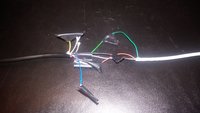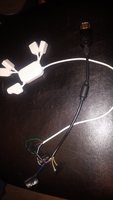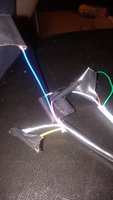Hmm, without a continuity tester it's hard to say which wire should be connected to which other one. Perhaps wiring up colour to colour will work though - does it?
I'd say it's reasonable to assume one of those wires is connected to the shield. Testing a random USB cable I just found suggests USB doesn't connect one shield to the other, so it only packs the four wires from the four contacts. Most older cables like d-type or mini din are conventionally braided, and that braid is connected to the shell at either end, providing an earth to the connected device (as well as an RF shield for when you don't need an earth), but I guess with most USB devices being double earthed (aka made of plastic) an earth isn't necessary, and USB doesn't care about RF interference for various reasons. But you'd better hope your metal cased hard disc caddy or USB stick is appropriately fused in case your computer decides to send a 1000V spike down to it.
You can make an easy continuty tester with a battery (5V is best), LED, resistor and wire to connect it all together, except for one wire to the battery. Connect the unconnected side of the battery to one end of the thing you want to test, and the other unconnected end to the other end of the thing. Should be doable even without a soldering iron.





